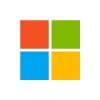Programming languages are the lifeblood of software development, enabling us to communicate with computers and create everything from simple applications to complex systems. The evolution of these languages reflects broader technological advancements and shifts in computing paradigms. In this article, we’ll trace the journey of programming languages from their inception to the modern-day, highlighting key milestones and their impact on software development.
The Early Days: Birth of Programming Languages
1. Machine Language (1940s)
The journey of programming languages begins with machine language, the most basic level of programming. Machine language consists of binary code (0s and 1s) that the computer’s hardware can directly understand. Early computers like the ENIAC and UNIVAC I used machine language, making programming a cumbersome and error-prone task.
2. Assembly Language (1950s)
To simplify the process, assembly language was introduced. Assembly language uses symbolic instructions that correspond to machine code but are easier for humans to read and write. For example, instead of binary, assembly might use mnemonics like MOV for moving data. Assembly language is closely tied to the architecture of the computer and required programmers to have a deep understanding of hardware.
High-Level Languages: Abstraction and Productivity
3. FORTRAN (1957)
The 1950s saw the advent of high-level programming languages, which abstracted away hardware details and made programming more accessible. FORTRAN (short for Formula Translation) was one of the first high-level languages, designed for scientific and engineering calculations. It introduced concepts like loops and conditionals, which simplified complex mathematical operations.
4. COBOL (1959)
Another significant development was COBOL (Common Business-Oriented Language), designed for business data processing. COBOL’s syntax was intended to be readable and self-explanatory, with an emphasis on ease of use for business applications. Its development marked the beginning of domain-specific languages tailored for particular industries.
5. BASIC (1964)
BASIC (Beginner’s All-purpose Symbolic Instruction Code) was created to make programming more accessible to beginners. Developed at Dartmouth College, BASIC’s straightforward syntax and interactive nature made it popular in educational settings and among hobbyists. It played a crucial role in democratizing programming.
The Rise of Structured Programming
6. C (1972)
The 1970s brought significant advancements with the development of the C programming language by Dennis Ritchie at Bell Labs. C introduced structured programming concepts like functions and control structures, which improved code organization and readability. Its influence extended far beyond its era, shaping many subsequent languages and operating systems, including Unix.
7. Pascal (1970)
Designed by Niklaus Wirth, Pascal was developed as a teaching language to encourage structured programming practices. Pascal’s strong type-checking and emphasis on structured programming made it a popular choice for teaching computer science fundamentals and for systems programming.
The Object-Oriented Paradigm
8. C++ (1985)
Building on C, Bjarne Stroustrup developed C++ to include object-oriented programming (OOP) features. OOP introduced concepts like classes and inheritance, which helped manage complex software projects by modeling real-world entities and their interactions. C++ became widely used for system/software development and game programming.
9. Smalltalk (1972)
Smalltalk, developed by Alan Kay and his team at Xerox PARC, was one of the earliest object-oriented programming languages. It introduced the concept of “objects” and “messages,” which influenced many later languages and established foundational principles of OOP.
The Modern Era: Versatility and Specialization
10. Java (1995)
Java, developed by Sun Microsystems, revolutionized programming with its “write once, run anywhere” philosophy. Java’s ability to run on any device with a Java Virtual Machine (JVM) made it a versatile choice for web development, enterprise applications, and mobile apps. Its emphasis on portability and security has kept it relevant in various domains.
11. Python (1991)
Python, created by Guido van Rossum, is known for its readability and simplicity. Its clean syntax and powerful libraries have made it a favorite for a wide range of applications, from web development to data analysis and artificial intelligence. Python’s ease of use and versatility have contributed to its growing popularity in both academic and industry settings.
12. JavaScript (1995)
Originally developed for client-side web development, JavaScript has evolved into a versatile language used both on the client-side and server-side (thanks to environments like Node.js). Its ability to create dynamic and interactive web applications has made it a cornerstone of modern web development.
13. Go (2009)
Go, or Golang, developed by Google, was designed to address the shortcomings of other languages in terms of performance and concurrency. Its simplicity, efficiency, and support for concurrent programming have made it a popular choice for building scalable and high-performance systems.
14. Rust (2010)
Rust, created by Mozilla, focuses on safety and performance. Its ownership model ensures memory safety without a garbage collector, making it suitable for system-level programming while avoiding common pitfalls like null pointer dereferences. Rust’s growing adoption is a testament to its innovative approach to memory management and safety.
15. TypeScript (2012)
TypeScript, developed by Microsoft, extends JavaScript by adding static types. This addition improves code quality and maintainability, particularly in large-scale applications. TypeScript’s compatibility with JavaScript and its tooling support have made it a popular choice for modern web development.
Conclusion
The evolution of programming languages reflects the ongoing quest to make software development more efficient, reliable, and expressive. From the binary codes of machine language to the sophisticated abstractions of modern languages, each step in this journey has brought new capabilities and opportunities to developers. As technology continues to advance, we can expect further innovations in programming languages, each contributing to the ever-expanding possibilities of software development. Understanding this evolution not only helps us appreciate the history of programming but also prepares us to tackle future challenges and embrace new technologies with confidence.



